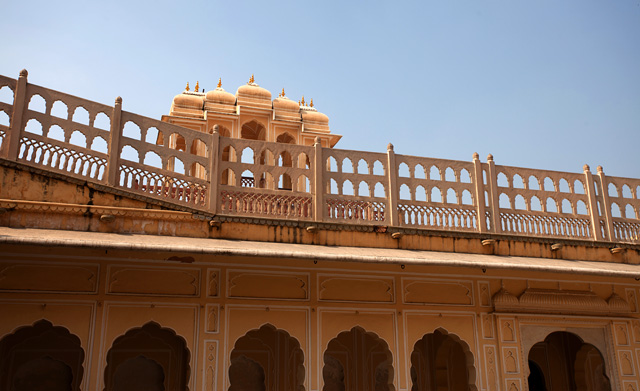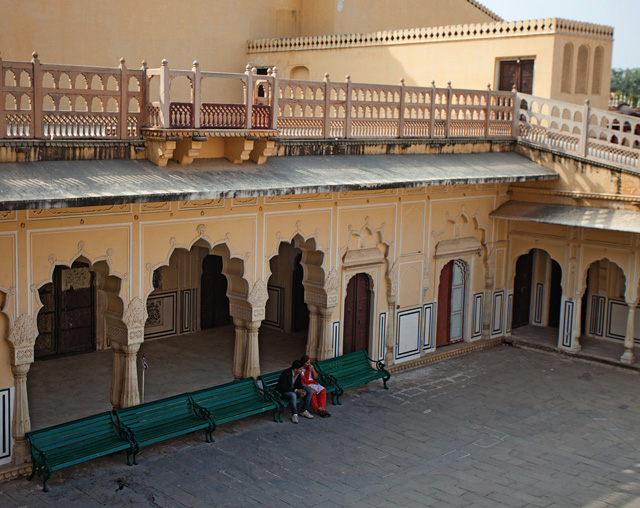This article was originally published in payaniga.com
I get a puzzled look from most people – especially those who are not regularly on the road – when I talk about Orchha. “Where is this place? How do you spell it? Tell me again, what is it called?”. The questions go on. It is the first time they would have heard this name. The obscure sounding pronunciation adds to the complexities. But in most occasions, they are interested in the place because they saw some pictures that I showed them.
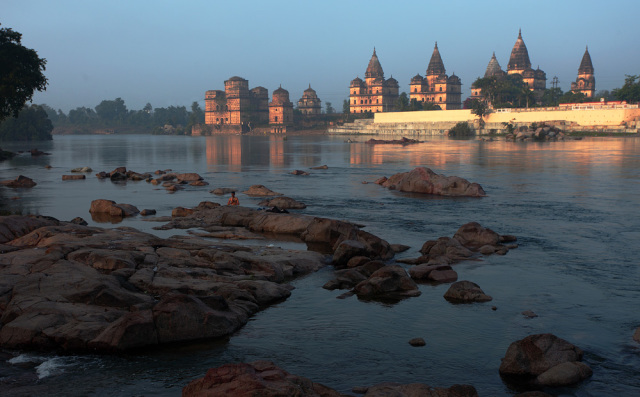
My introduction to Orchha happened just that way. It was not a place I had heard about in text books, glossy tourist brochures or magazine covers. But if you are trolling the web long enough looking for places to go to, and to see where others are going, it won’t be long before you stumble upon Orchha. I would have missed the name like everyone does, except that some pictures from the place made me pause and take a second look. It appeared so attractive, it remained on the back of my head since the day I first saw the photographs.
If I were to pick one thing in Rajasthan that charmed to no end, I will have to point at the desert landscapes. Next comes Chhatris. The simple, yet elegant canopies that served as pavilions, galleries, design elements in building architecture and also as memorials for the dead are ubiquitous all across Rajasthan. It is perhaps the placement of chhatris in relation to each other and within the context of a larger building that makes them appear grand and beautiful, than as stand alone elements. The rising chhatris in the corners of palaces and a series of them in the pathways are perhaps the most standard placements seen in the ancient buildings. When built as memorials, they stand out independently and often in randomly built clusters.
Perhaps it is best to quote from wikipedia and leave it at it, since my knowledge of history and architecture of these structures is very limited.
“Chhatris are elevated, dome-shaped pavilions used as an element in Indian architecture. Chhatris are commonly used to depict the elements of pride and honor in the Rajput architecture of Rajasthan. They are widely used, in palaces, in forts, or to demarcate funerary sites. Originating in Rajasthani architecture where they were memorials for kings and royalty, they were later adapted as a standard feature in all buildings in Rajasthan, and most importantly in Mughal architecture. They are today seen on its finest monuments, Humayun’s Tomb in Delhi and the Taj Mahal in Agra. Chhatris are basic element of Hindu as well as Mughal architecture.”
Here is a set of images of Chhatris I made during a photography tour to Rajasthan last year. I loved these structures so much, that I yearned to spend days together experimenting compositions. But I would have been murdered by other photography enthusiasts in my group, had I done so and kept them waiting.
Click on the images to see them in full size.
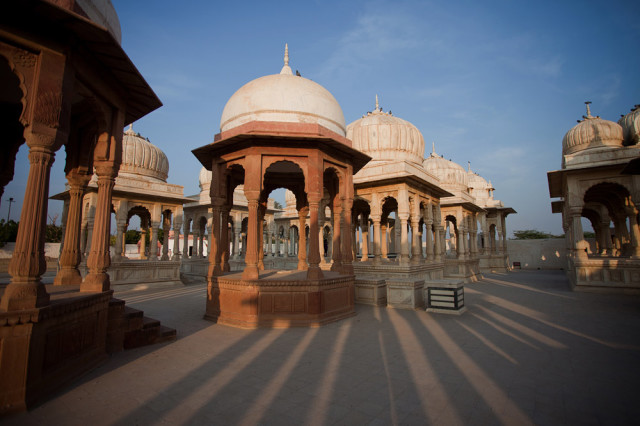
If there is one place in Rajasthan where I immensely enjoyed photographing the chhatris, it is Devi Kund, just outside Bikaner. The enclosure at Devi Kund has a large number of chhatris built in memory of kings of Bikaner. Some of them are neatly built in rows while some more more are randomly located. It is a beautiful sight to see during the hours of sunrise and sunset. And the patterns, shades and contours created by a combination of chhatri arrangements and changing light make the place a photographers delight and a place worth observing the whole day.
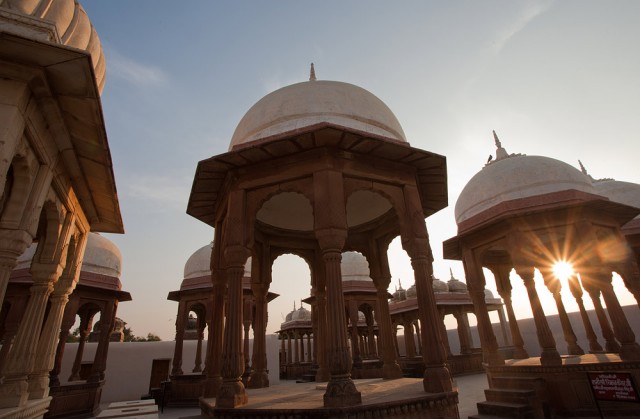
Sun rays penetrating the chhatris at Devikund, Bikaner.
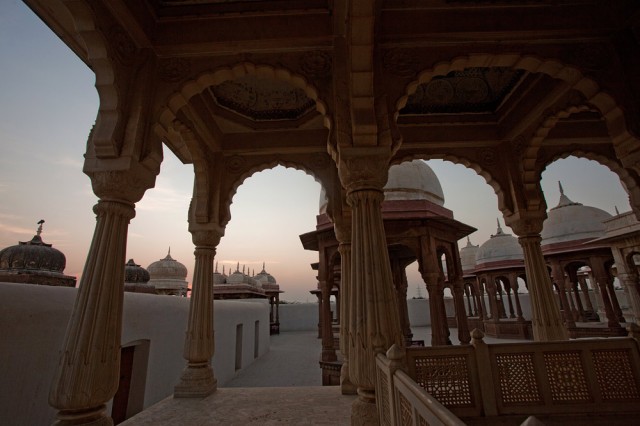
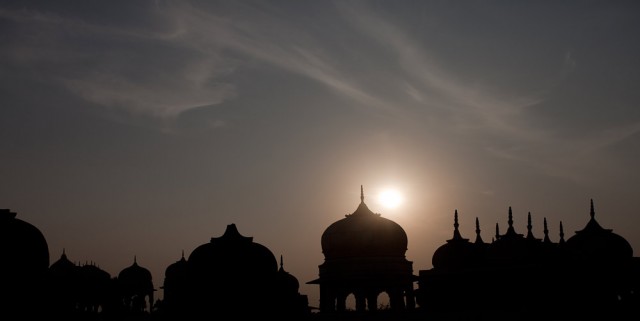
The memorial for Kings of Jaipur at Gaiter Village was my first introduction to a cluster of chhatris. Unlike Devi Kund, the chhatris here are spread randomly in multiple clusters. While Devi Kund’s chhatris can be a delight to see with their uniformity and repetitive patterns, Gaiters chhatris stand out in their size and grandness. Several chhatris here have intricate marble carvings depicting the stories from Indian mythology. A sense of grandness and a princely touch is apparent in their structures, which I hoped to capture with the photograph below.
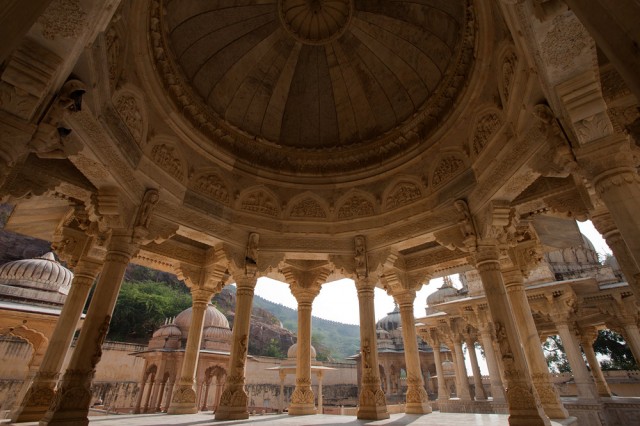
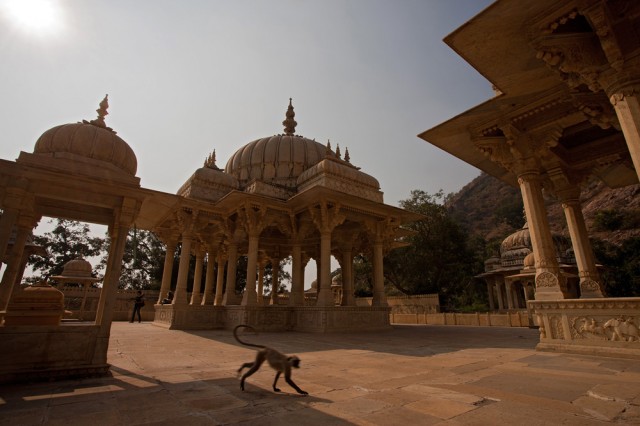
I would not be sure if this structure below in Hawa Mahal, Jaipur, can be classified as chhatris, but it surely seemed to be belong to the same class.
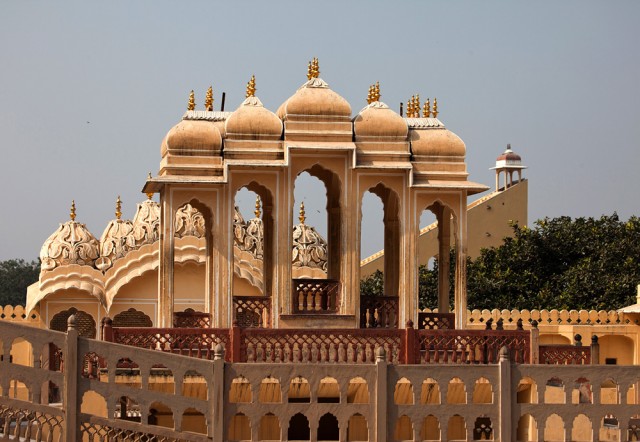
And here is an image from Gadisagar Lake, Jaisalmer, with Chhatris forming small islands. I am told that Jaisalmer too has an assembly of Chhatris which are perhaps prettiest of the lot, though I haven’t visited them.
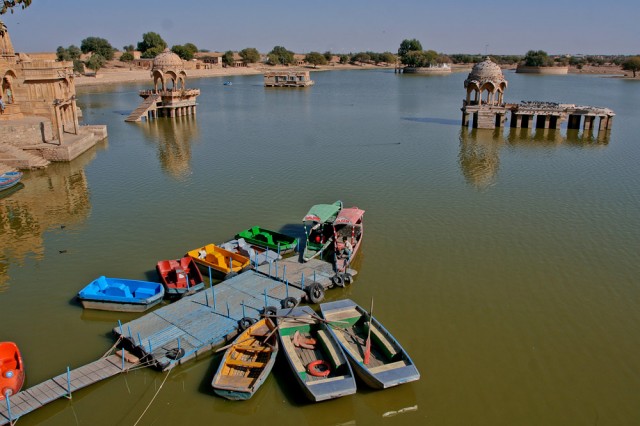
Although Chhatris are an integral part of heritage buildings in Rajasthan, the first time I got charmed by these simple and elegant structures is at the small town of Orchha, Madhya Pradesh. The royal enclosures at Orchha had a generous dose of chhatris decorating the buildings. The cenotaphs of Orchha’s kings, although much different to the canopy-like chhatris we see in Rajasthan, are a delight to see, with their giant sizes and their great location. My visit to Orchha, which begun out of curiosity, extended for good five days with much of it spent admiring the chhatris.
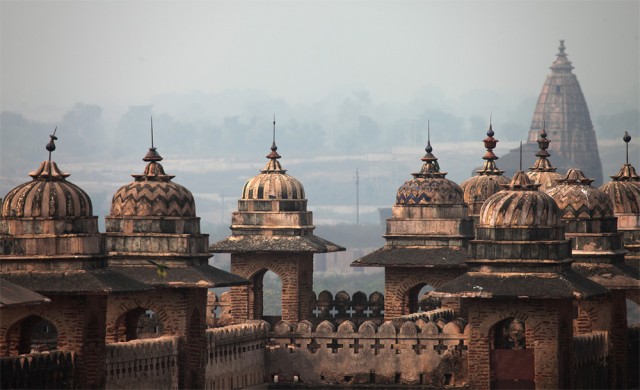
The above photograph is of the royal enclosures inside the fort at Orchaa, and images below are of the royal cenotaphs.
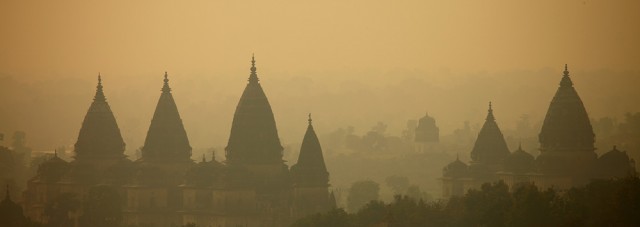
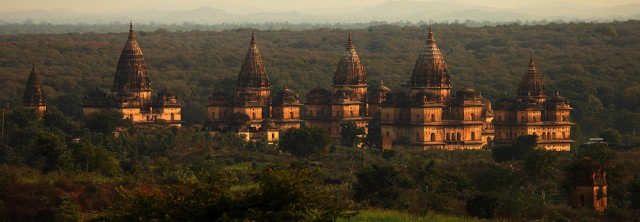
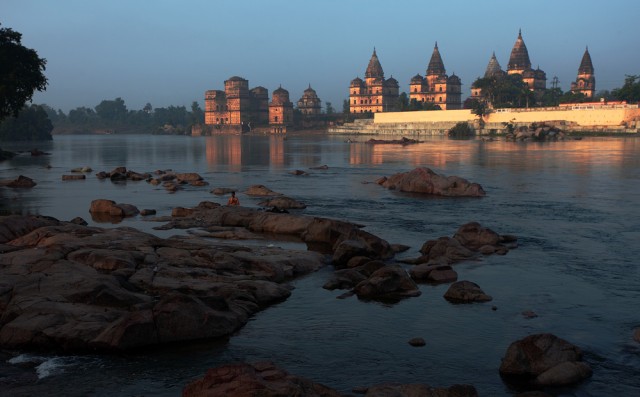
The pink hues of hawa mahal’s facade brings many thoughts into the mind – the simple and elegant beauty of the palaces of Rajasthan, Jaipur’s fetish with the deep reddish hues carefully preserved over a century, the confined lives of women in the palaces and mostly – the ultimate symbol of Rajasthan Tourism. On my first visit to Rajasthan, Hawa Mahal was in the beginning phase of a long lasting renovation, taking its time as any government project would. About four years later, on my second visit a month ago, the process was finally complete. It was the right time to be there, before the paint faded, before coloured glasses lost its sheen, before its fountain left to die and before the vandals arrived to scribble the details of their love life. The insides of the Hawa Mahal were gleaming with fresh paint, coloured glass (or are they stained glasses? there is no easy way to find out) and spotless interiors – as if the Maharaja had just gifted the palace of winds to the members of his harem.
We loved it, and almost refused to leave. A spree of photography lasted for four hours. We left, only to allow some time for other charms of Jaipur’s old city, but haven’t had enough of the Mahal yet. Here is a compilation of images made in and around Hawa Mahal in this brief period. But Hawa Mahal deserved more time; and more, better, beautiful images.
The typical image of Hawa Mahal in tourist brochures shows it standing alone and isolated, as if it is located in a pristine undisturbed location, waiting for you to discover it. Far from so, it is right next a busy road. A national highway to be precise. In fact, the whole idea of building Hawa Mahal was to let the royal women a glimpse into the outside world, the city’s busy life, and processions during the festival. And it is this reason, that the windows of Hawa Mahal face a busy street but the entry to it is from the other side. It is a relatively lackluster entrance that doesn’t give clues to all the glory that the palace possesses.
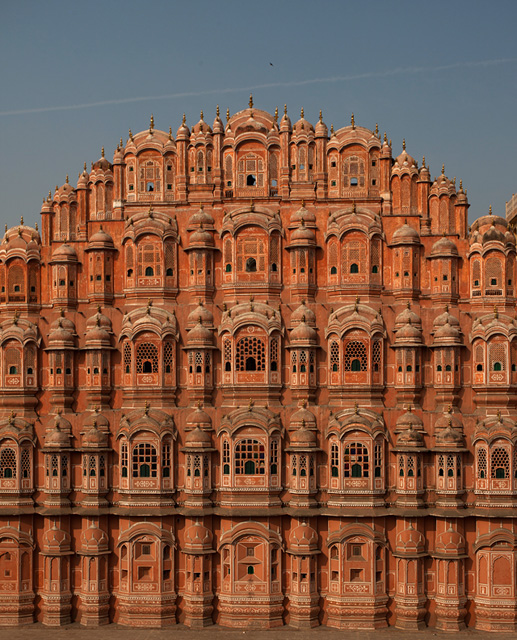
The facade of famous Hawa Mahal – the palace of winds
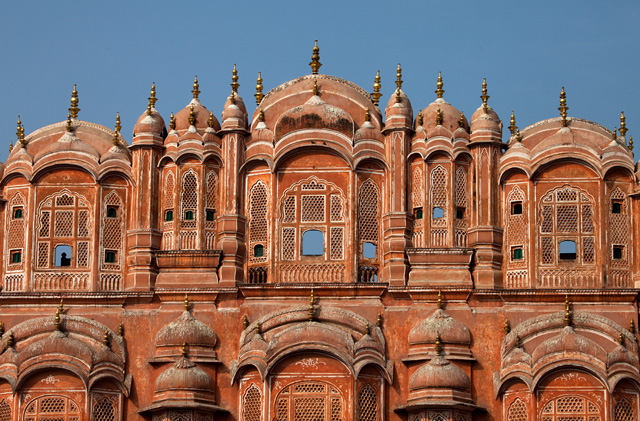
A closer look at the facade.
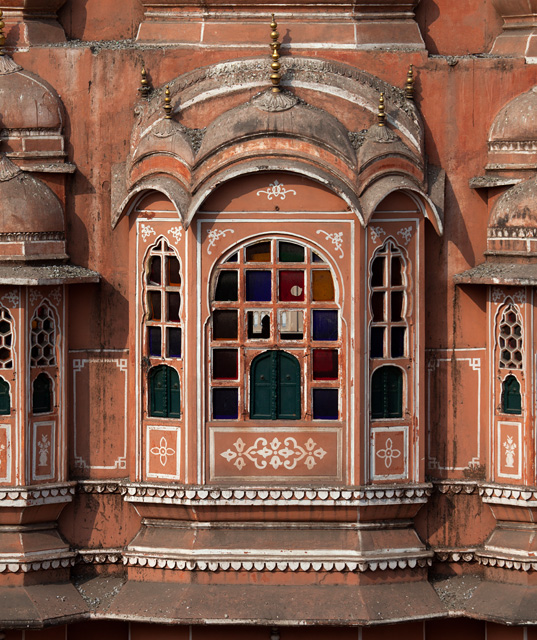
One of the colourful windows of Hawa Mahal that are spread over five stories. The colours of the glass are not apparent here; see the images from inside Hawa Mahal below.
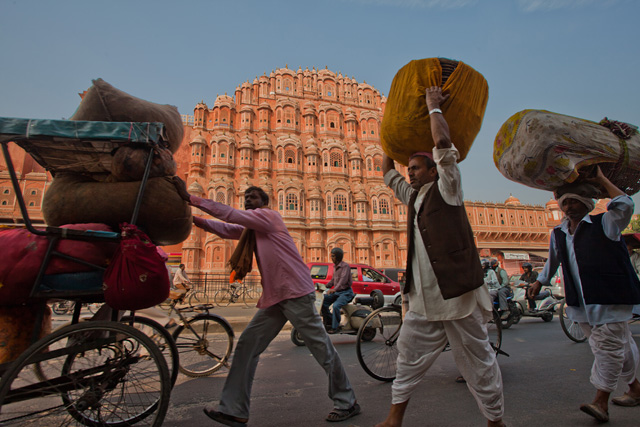
Life goes on the street in front of Hawa Mahal, not stopping by to admire the beauty of the palace that is an everyday affair for the people of Jaipur.
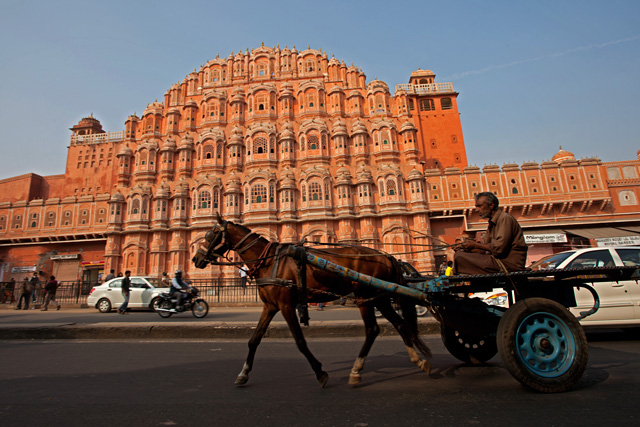
Life goes on in front of Hawa Mahal, on the busy National Highway 8.
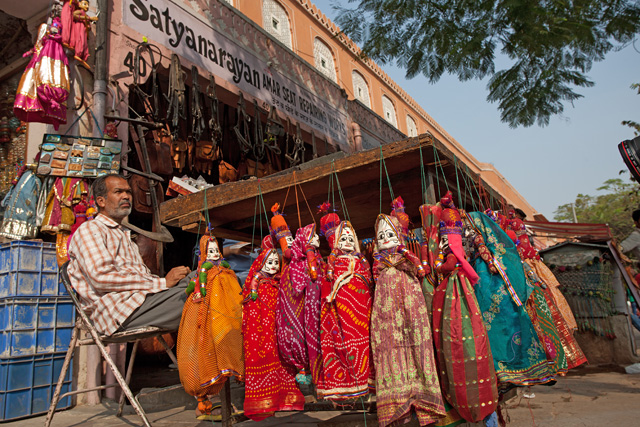
A shop selling wares for tourists near Hawa Mahal.
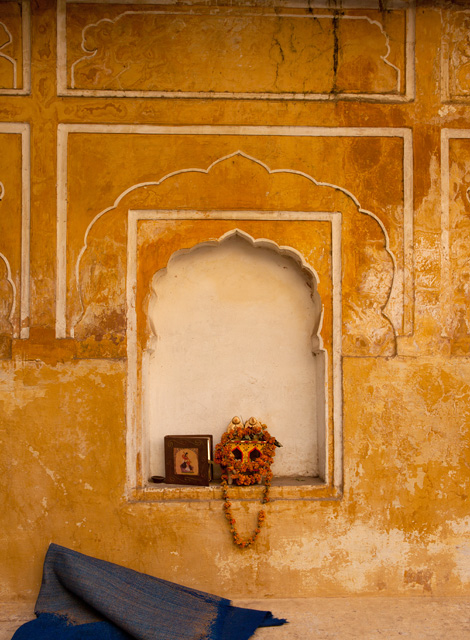
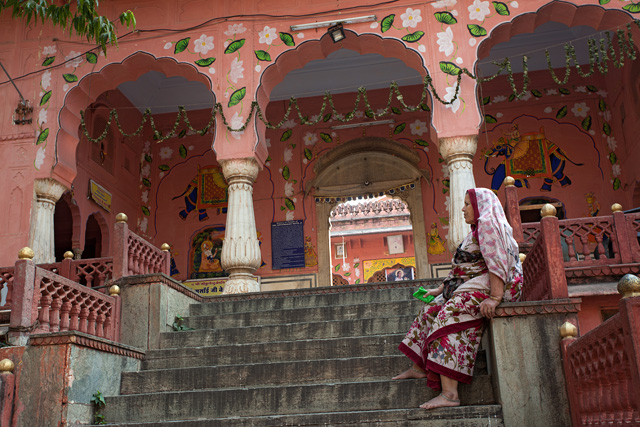
At the quiet and peaceful alleys behind Hawa Mahal.
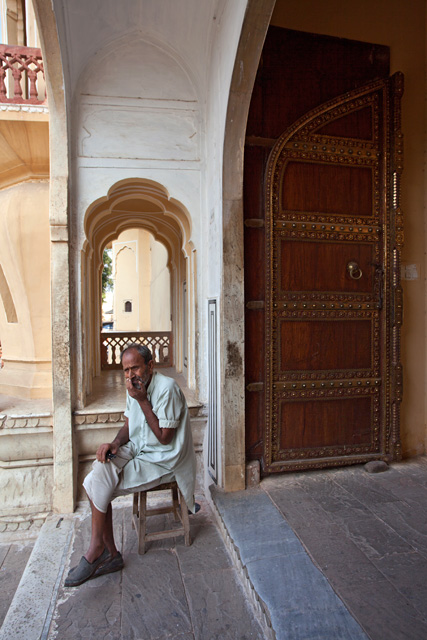
The relatively lackluster entrance to go inside Hawa Mahal is on the side opposite to its colourful facade. On entering, the inside appears ordinary at first, until you go past a few doors.
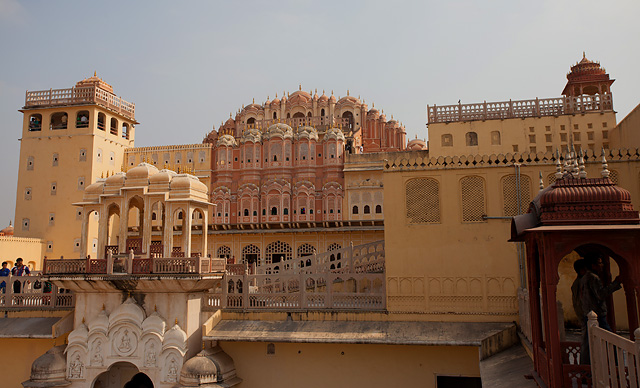
The arches and the galleries inside Hawa Mahal are as charming as its facade is.
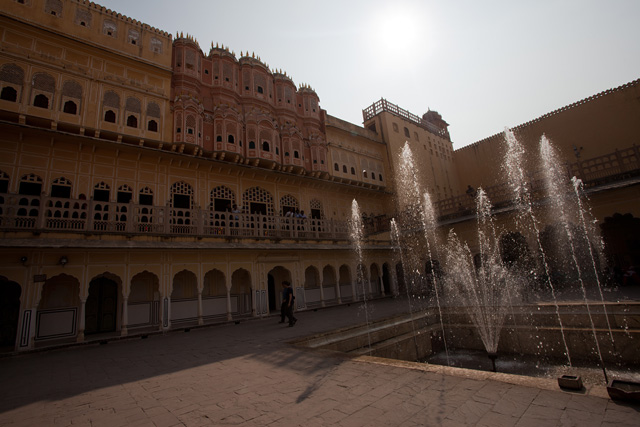
The fountains add to the glory of the building. The morning of our visit to Hawa Mahal, we had seen a photograph in the newspaper showing the springing fountains. But to our disappointment, they were turned off when we arrived. As luck would have it, someone turned it on just for a minute, barely long enough for me take this picture.
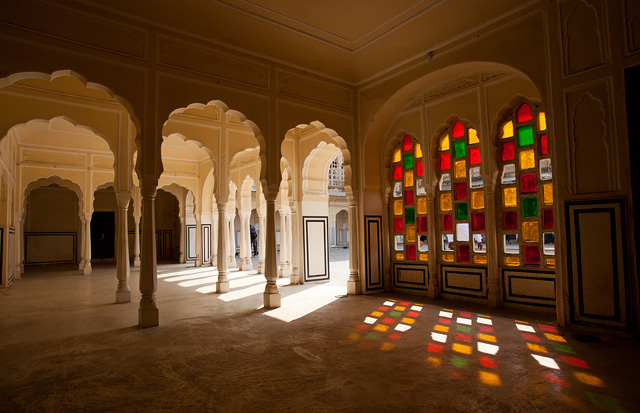
I almost missed this hall with colourful glass windows, located on one side of the entrance. It would have been a great loss, not seeing this.
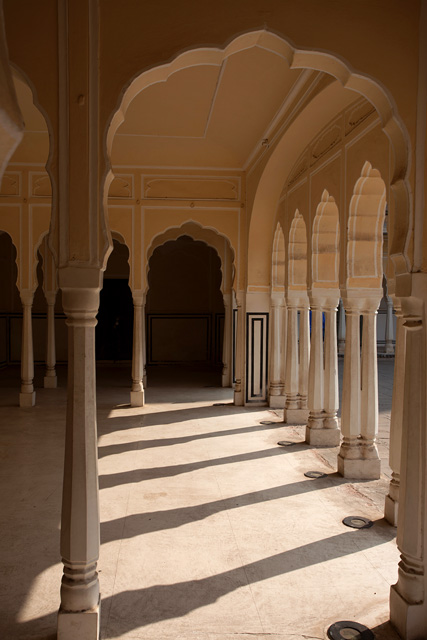
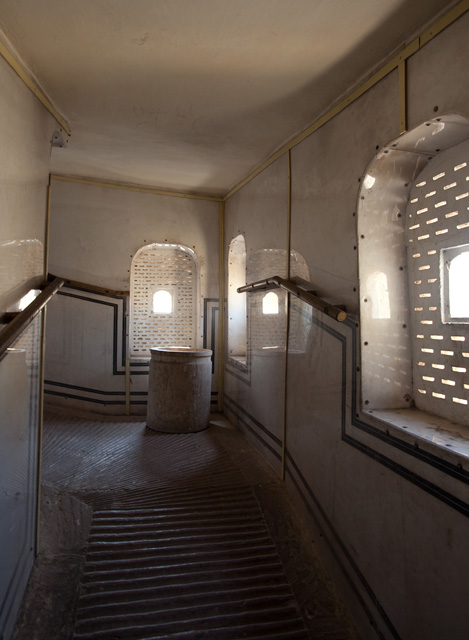
Play of light on the ramp leading up.
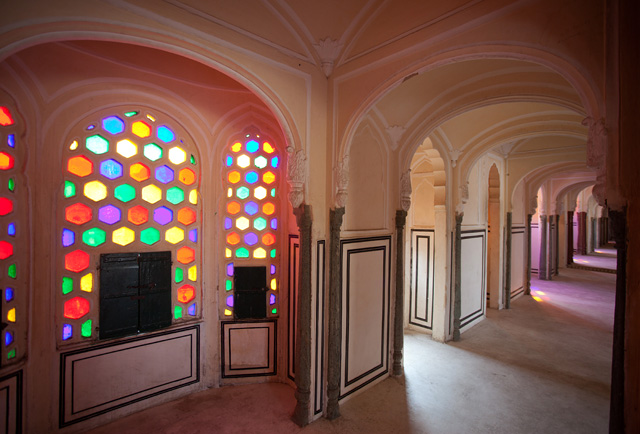
The galleries on the upper floors.
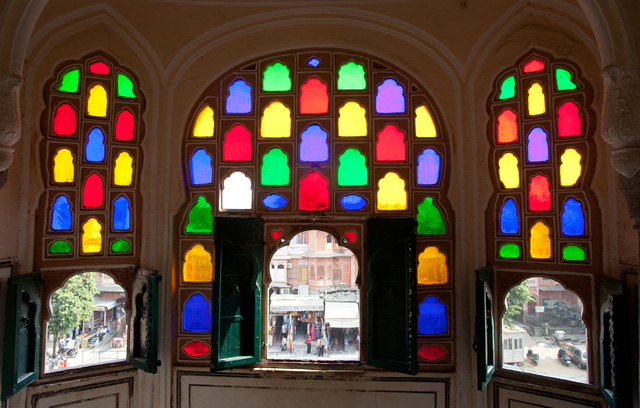
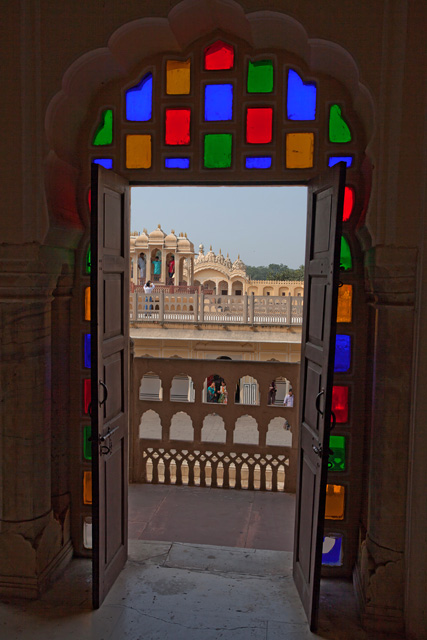
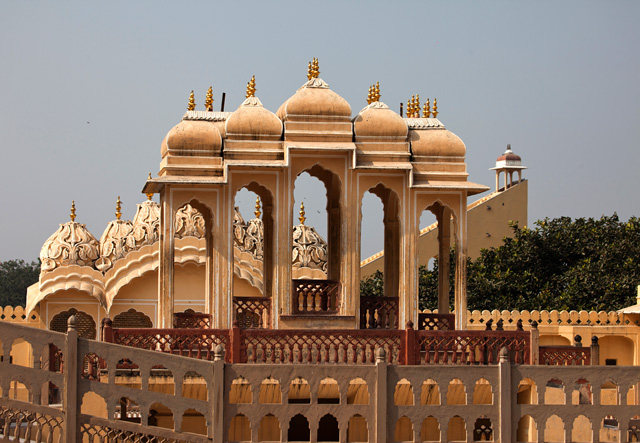
The insides of Hawa Mahal, seen from the first and second floor galleries.
